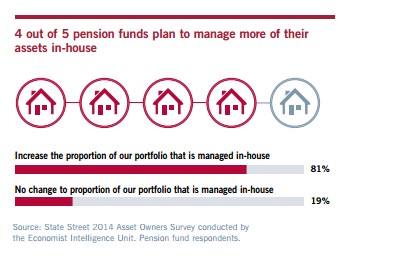
When it comes to pension funding, an 80 percent funded ratio is the benchmark for a “healthy plan”.
But over at the STUMP blog, actuary Mary Pat Campbell has penned a post taking issue with the 80 percent “rule”. According to Campbell, 80 percent isn’t a magic number that makes pensions “okay”.
The post is published below:
______________________
By Mary Pat Campbell, originally published at STUMP
I have just about had it with the 80 percent.
Unlike the commonplace idiocies of ‘You only use 10% of your brain’ or ‘The Great Wall of China is the only manmade object visible from space’, the 80 percent myth is dangerous.
I speak, of course, of the supposed percent fundedness level at which public pensions are “okay”.
The American Academy of Actuaries has a brief on the 80% pension funding myth, and I will give loads of examples of how even “100% funded” plans have been shown to be shaky.
But that’s not for today.
Today, I have decided to keep track of every idiot who refers to this 80% funding level (or something even worse) as proof that a pension plan is or is not okay. Generally, reporters fall afoul of this, and this is not necessarily concerning. People don’t think of reporters, as a group, as expert in anything.
But when there are politicians directly making decisions about public pensions, union leaders arguing about their public pensions, and dear lord, public plan TRUSTEES putting this bilge forth, that is super dangerous.
If you want to follow yourself, just create a google news alert on ‘80 percent pension’ — google news alerts don’t necessarily work the same for everybody, so feel free to email me at marypat.campbell@gmail.com if I missed any good (or, rather, horrible) examples.
So here goes:
Congrats, New Jersey Senate President Steven Sweeney — you are the inaugural member of my 80 Percent Pension Funding Hall of Shame!
TRENTON — State Senate President Stephen Sweeney is floating an idea to move the goal posts for funding public workers’ pensions in order to take pressure off the state budget.
Sweeney (D-Gloucester) said today the state — which by law is supposed to fund the pension system 100 percent by 2018 — should instead focus on getting the pension system 85 percent funded to put it in line with private sector plans that are considered healthy.
New Jersey’s pension funds are currently funded at about 54 percent, in part because the state skipped or made only partial payments for a decade. Under a 2011 law pushed by Sweeney and signed by Gov. Chris Christie that included cuts to workers’ pension and health benefits, the state is required to ramp up its payments to once again fully fund the system. However, Christie cut the payments by more than $2 billion for this budget year and the previous one.
Yes, yes, he picked 85 percent, but anything less than 100 percent is questionable. Especially with New Jersey math.
Here’s a nice kicker:
“The governor paints a very bleak picture by saying ‘look at what a big hole we’re in,’” said Sweeney. “The governor’s focus is basing everything on us being fully-funded. That’s not a realistic number. And a lot of pension systems live being 85 percent funded, or in the 80s.”
Yeah, they live right up until they don’t.
Ask the Detroit retirees what they think of their supposedly almost-100-percent-funded pension – pension benefits that got cut (note: it was not as fully funded as they thought, but that’s for another time.)
NEWS ALERT SENATOR SWEENEY: lots of public pensions aren’t doing well. While 85% funded would be a lot better than where NJ pensions are right now, that is not a laudable end goal.
I’ve already got THREE OTHER EXAMPLES for my new Hall of Shame from just this week, so this Hall of Shame is going to be filling up rapidly.
With respect to politicians, or union leaders, or other such, there is no cure (that is, I, personally, can’t do much about it other than mock them on the blog).
But at least with regards to reporters, I will be writing them and/or their organizations with links to the Academy’s brief. And maybe the blog posts where I call them idiots. We’ll see.









